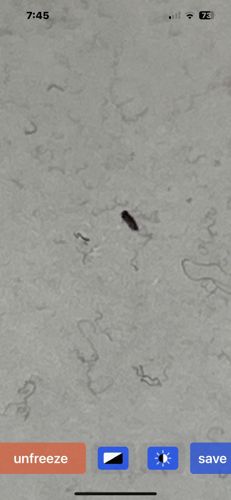Carpet Beetle (larva)
Scientific Name: Anthrenus, Attagenus, or Trogoderma species (genera of common carpet beetles)
Order & Family: Coleoptera, Dermestidae (Dermestid Beetles)
Size: Larvae typically range from 2-5 mm in length. Adults are small, usually 2-4 mm.

Natural Habitat
Indoors: closets, attics, storage areas, under furniture, under carpets, in air ducts, and in museum collections. Outdoors: nests of birds, rodents, and insects, where they feed on organic debris.
Diet & Feeding
Larvae feed on a variety of animal-based products, including wool, silk, fur, feathers, leather, dried meat, and pet food. They are known to damage carpets, clothing, upholstery, and stored foods. Adult carpet beetles feed on pollen and nectar.
Behavior Patterns
Carpet beetle larvae are typically found in dark, undisturbed areas. They are negatively phototactic, meaning they avoid light. They molt several times before pupating and emerging as adult beetles. Adults are winged and can fly, often found near windows as they are attracted to light.
Risks & Benefits
Risks: Can cause significant damage to household items made of natural fibers (wool, silk, fur), stored food products, and museum specimens. Some people may experience allergic reactions or skin irritations from hairs shed by the larvae. Benefits: In natural environments, they play a role in decomposition, breaking down animal remains and other organic matter.
Identified on: 8/28/2025